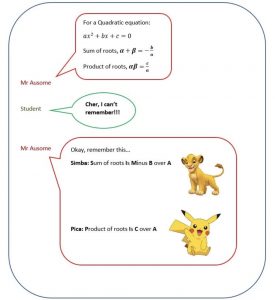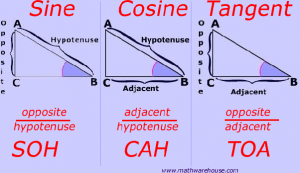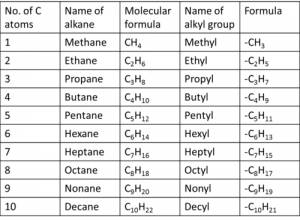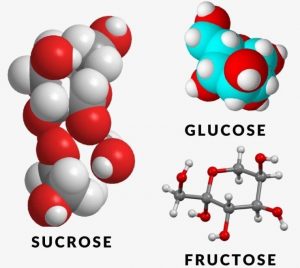
O-Levels require lots of memory work, which is probably one of the toughest and most time-consuming challenges that you face when you’re studying for your exams. Even if you have mastered the skills and techniques, you can’t apply them in your exam if you can’t memorise what you need to.
Using mnemonics is a hack that is often adopted by students from all around the world. You make memorisation easier by forming stories or rhymes that you can associate with what you need to remember. It will help you to ensure that the information you need to memorise will be effortlessly stuck in your head.
I’ve compiled a quick cheat sheet of mnemonics for the different O-Level subjects that are going to be useful for you.
You might already know some of them, or you can discover new ones that are going to ease your burden during your revision.
English
For English, spelling can be a struggle for many, especially the commonly misspelled words. It is extra challenging for words with the same sounds but is spelled differently.
But I’ve got just the hack for you to differentiate the spelling for some words that are often confusing for students.
‘ie’ or ‘ei’?

A lot of students have difficulties differentiating whether the word should be spelled with an ‘ie’ or ‘ei’ when they both sound the same.
Examples of some words that are spelled with:
‘ie’:
- Believe
- Belief
- Thief
- Achieve
- Chief
- Piece
- Yield
‘ei’:
- Receive
- Deceive
- Receipt
- Ceiling
- Conceit
- Perceive
When in doubt, always remember the rule of thumb: “I before E, except after C”. Do you see it?
Repeat this mnemonic whenever you’re spelling these words and you will never mix them up again.
‘Principal’ or ‘principle’?

These two words sound the same but have totally different meanings; one is your school principal, while the other is a belief or rule.
When in doubt, remember that: “A principal is always a friend.”
Since a pal is a friend, remember that ‘principal’ refers to the person: your school principal.
Spelling ‘Necessary’

One ‘C’, two ‘S’s? One ‘S’, two ‘C’s? Spelling ‘necessary’ can still be very confusing for many.
Just remember the outfit: “One Collar and Two Socks”. One ‘c’ and two ‘s’s!
Spelling ‘Exaggerate’
You might still be spelling ‘exaggerate’ with only one ’G’.
Remember: “Goofy Greg loved to exaggerate”. Spell ‘exaggerate’ with two ‘G’s!
Credits: Oxford Royale
Additional Mathematics
Sum and Product of Roots
Aside from needing to understand the concepts, Additional Mathematics also requires you to memorise lots of formulas that you will need to use to solve your problems, and they can become confusing.
One set of formulas that you need to memorise is the sum and product roots. This set of formulas is not provided in the given formula sheet.
So what’s an easy way to remember how you can solve for the sum and product of roots? Simba and Pica!

Simba: Sum of roots Is Minus B over A
Pica: Product of roots Is C over A
Credit: Apex Math Tuition Singapore
Think of these two cute characters and you won’t mess up the formulas anymore!
Elementary Mathematics
Order of Operations

Photo credit: Miss Quinn Teaches
When it comes to solving a long, complicated math problem with many operations, you absolutely need to know which operation to start with.
If you solve in the wrong order of operations, you will get a completely different answer.
The order of operations is one of the basics that you need to get right, or it will cost you to lose unnecessary marks in many questions.
So, you can easily memorise the order of operations by remembering “BODMAS”:
- Brackets
- Orders (Powers/Indices/Roots)
- Division
- Multiplication
- Addition
- Subtraction
Trigonometric Ratios

Trigonometric ratios are used a lot in O-Level Elementary Mathematics where you need to remember how to solve for the lengths and angles in a triangle.
There are three lengths in a triangle:
- Hypotenuse (the longest side of the triangle)
- Adjacent (the length adjacent/next to the identified angle, but not the hypotenuse)
- Opposite (the length opposite the identified angle)
Three trigonometric functions that can be used:
- Sine (Sin)
- Cosine (Cos)
- Tangent (Tan)
These are often used interchangeably, so how can you remember how to use them respectively? By remembering “TOA CAH SOH” (Big-Footed Woman in Hokkien):
Tangent angle = Opposite length over Adjacent length
Cosine angle = Adjacent length over Hypotenuse
Sine angle = Opposite length over Hypotenuse
This catchy phrase that’s very Singaporean will help you to match the trigonometric ratios with no difficulty.
Chemistry
The Four Most Commonly Used Alkanes

Alkanes are a series of saturated hydrocarbons (carbon and hydrogen). It is a huge component in chemistry that you will need to identify in your papers.
In O-Levels, they will usually only require you to memorise the first four, which are methane, ethane, propane, and butane.
There is a very straightforward way for you to remember the order of these alkanes:
- Methane (Megan)
- Ethane (Eats)
- Propane (Peanut)
- Butane (Butter)
Reactivity Series of Metals

The reactivity series is another essential list that you need to memorise, as chemistry is a lot about reactions.
Different metals in the periodic table have different reactivities and are placed in an order.
You will need to know which of the metals will react first etc., as the questions will definitely test you on those.
You can use this simple sentence:
- Potassium (Please)
- Sodium (Stop)
- Calcium (Calling)
- Magnesium (Me)
- Aluminium (A)
- Zinc (Zebra)
- Iron (Instead)
- Tin (Tell)
- Lead (Laura)
- Hydrogen (How)
- Copper (Copper)
- Silver (Strengthens)
- Gold (Gold)
Credit: SimpleChemConcepts
Biology

Photo Credit: Biology Online
Carbohydrates are organic compounds that can usually be broken down to release energy in the body.
There are different types of carbohydrates: simple carbohydrates which have monosaccharides (simplest carbohydrates) and dissacharides (double sugars). There are also complex carbohydrates which are long chains of sugar molecules strung together.
You will need to know some examples of each of the types of carbohydrates, and this is how you can memorise them:
Simple Carbohydrates: Monosaccharides
- Glucose (Good)
- Galactose (Girl)
- Fructose (Friend)
Simple Carbohydrates: Disaccharides
- Maltose (My)
- Lactose (Lazy)
- Sucrose (Son)
Complex Carbohydrates
- Starch (So)
- Glycogen (Good)
Physics

Electromagnetic waves
According to The Economic Times, electromagnetic waves “are created as a result of vibrations between an electric field and a magnetic field.”
These are the types of electromagnetic waves that are arranged from Long Wavelength, Low Frequency, Short Wavelength, High Frequency.
- Radio waves (Ruby’s)
- Microwaves (Mother)
- Infrared waves (Is)
- Visible waves (Visiting)
- Ultraviolet waves (Uncle)
- X-ray (Xavier’s)
- Gamma-ray (Garden)
Relationship between Focal Length and Object & Image distance, from a lens or mirror
To calculate the focal length, distance of object, or distance of image, the formula used is:
1/f = 1/do + 1/di
To remember this formula effortlessly, remember “If I do, I die”, where:
- “f” = Focal length
- “do” = Distance of Object
- “di” = Distance of Image
Credit: Mnemonic Device
Geography

The Seven Continents
One of the subject for Combined Humanities is Geography. Knowing what the continents are is important! Don’t mistake continents for countries or states.
Here’s how:
- Europe (Eat)
- Asia (An)
- Africa (Apple)
- Australia (As)
- Antarctica (A)
- North America (Nighttime)
- South America (Snack)
Credit: Seterra
Conclusion

A lot of subjects in the O-Levels are content-heavy and require memory work to do well. It’s risky if you hope that your brain will magically remember what you need to remember when you try to study just by reading it over and over again.
I hope that the mnemonics that I’ve shared would be useful for those taking the O-Levels!
Do you have any other interesting ways that you used to memorise content? Share with us in the comments below!
Good luck!
